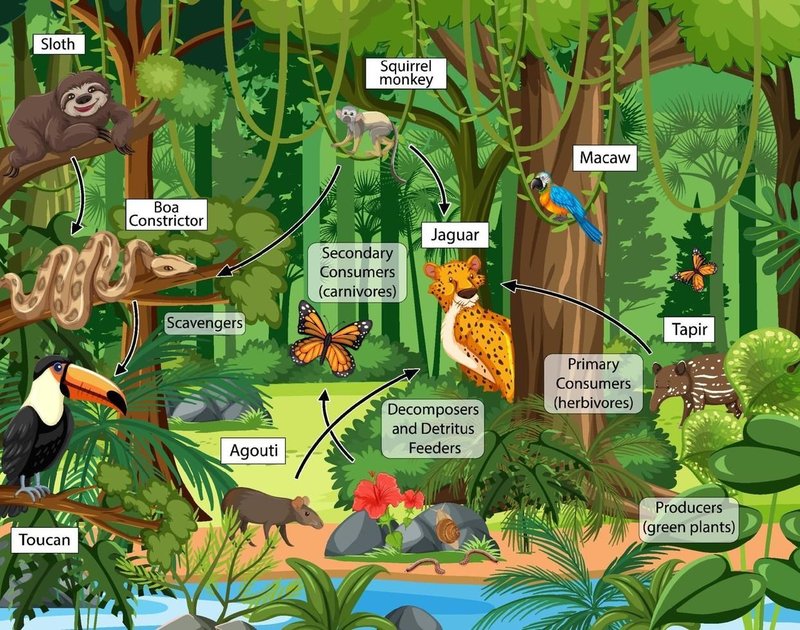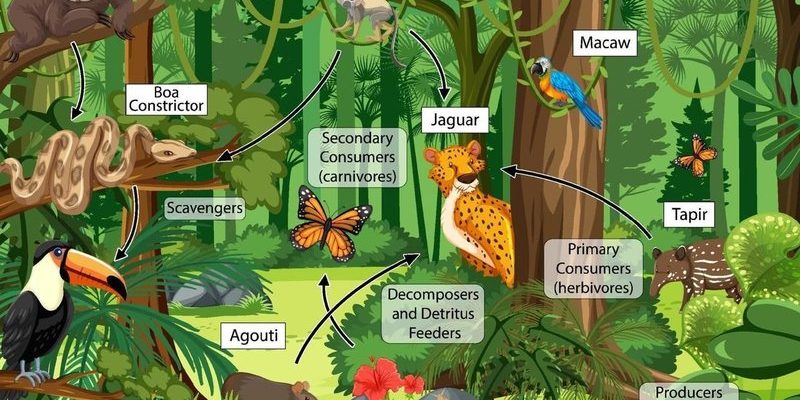
Inchworms, also known as loopers, are actually the larvae of certain moths. They move in a characteristic inching, looping motion—hence the name. But what’s their actual role in the forest ecology? Let’s dive into how they fit into the grand scheme of things, their importance to the food web, and what might happen if they were suddenly gone.
What Are Inchworms?
Inchworms are the caterpillar stage of moths belonging to various families, primarily Geometridae. These little guys can be tricky to spot, blending in seamlessly with their surroundings. They often mimic twigs or leaves, making them excellent at avoiding predators.
You might be surprised to learn that inchworms come in a variety of colors and patterns, depending on their species. Some are green, which helps them camouflage among leaves, while others are brown or gray, resembling bark. This ability to hide is crucial because, as we’ll see later, these little critters have a lot of other animals depending on them for food.
Their life cycle begins when female moths lay eggs on host plants, usually trees or shrubs. Once the eggs hatch, the inchworms emerge hungry and ready to feast. Here’s how they fit into the bigger picture of the forest ecosystem.
The Role of Inchworms in the Food Web
Inchworms play a vital role in the food web, serving as a food source for various predators. Birds, small mammals, and even some larger insects rely on these munching machines to survive. For example, a hungry bird might spot an inchworm dangling from a leaf and swoop down for a snack.
This connection is essential for maintaining balance in the ecosystem. **If inchworms were to disappear,** many of these predators would struggle to find food, which could lead to a decline in their populations. This, in turn, could upset the entire food web, illustrating just how interconnected life in the forest is.
On the flip side, inchworms also serve a purpose for the plants they feed on. While they may munch through leaves, a healthy plant can often withstand this damage and continue to thrive.
This relationship between inchworms and plants is known as *herbivory,* where the feeding of an herbivore (like an inchworm) can sometimes stimulate plant growth. Think of it like a pruning session! In fact, some plants have even evolved ways to deal with these munching pests by producing more leaves in response to their feeding.
Inchworms and Biodiversity
The presence of inchworms is also a good indicator of biodiversity within a forest. A healthy forest will have a mix of different species, including various types of inchworms. This diversity helps the ecosystem stay resilient against pests and diseases.
If you ever go hiking and notice a variety of inchworm species hanging around, it’s a sign that the ecosystem is thriving. Conversely, if you see a sharp decline in their numbers, it may indicate underlying issues, like pollution or habitat destruction.
Maintaining biodiversity is crucial because it supports various ecological functions. For example, higher biodiversity can lead to improved crop yields, better pest control, and even greater resistance to climate change. So, when we protect inchworms, we’re also protecting the broader spectrum of life in the forest.
Inchworms as Indicators of Environmental Health
Inchworms can also serve as *bioindicators*, meaning their health and population sizes reflect the overall health of their environment. High numbers of inchworms often suggest that a forest is in good shape. On the other hand, sudden declines may point to environmental stressors, like pollution or climate change.
By monitoring inchworm populations, scientists can gain insights into the health of forest ecosystems. This information is crucial for conservationists working to protect these environments. If something is impacting the inchworm population, it can lead to targeted efforts to address the root of the problem.
Here’s the thing: keeping a close eye on our tiny friends can help us ensure the future of our forests. It’s like having a check engine light for the environment—when it goes off, we need to pay attention and take action.
Inchworms and Their Predators
As we’ve discussed, inchworms are a vital food source for many creatures in the forest. Birds, such as warblers and sparrows, rely heavily on them during the breeding season when they need extra food to feed their young. Snakes and small mammals like shrews also enjoy munching on inchworms when they’re available.
This relationship illustrates the concept of *energy transfer* within the food web—energy moves from the plants to the inchworms and then to the predators. Each time energy transfers, some is lost as heat, but it also helps maintain the overall balance of the ecosystem.
Interestingly, the presence of predators can also help control inchworm populations, preventing them from overwhelming the plants they feed on. This natural balance is crucial. The dance between inchworms and their predators keeps the food web robust and dynamic.
Threats to Inchworm Populations
Despite their crucial role, inchworms face several threats that can affect their populations. Habitat loss due to urban development, deforestation, and agriculture can reduce their numbers significantly. When forests are cut down or altered, inchworms lose their homes and food sources.
Pesticides are another significant threat. These chemicals, while effective for pest control, also harm beneficial organisms like inchworms. When they’re sprayed on crops or in residential areas, inchworms may be exposed, leading to population declines. It’s essential for us to use pesticides responsibly and consider the broader implications for the ecosystem.
Climate change is also a growing concern for inchworms. Changes in temperature and seasonal shifts can affect their life cycles and food availability. As temperatures rise, some species may struggle to adapt, leading to further declines. Monitoring these changes can help us take action before it’s too late.
Conservation of Inchworms and Their Habitats
To support inchworm populations and the broader ecosystem, conservation efforts are crucial. Planting native trees and shrubs can provide habitat for inchworms and other wildlife. By creating environments that support biodiversity, we can help maintain healthy food webs.
You might also consider reducing pesticide use in your garden. By opting for organic methods or natural pest control, you can support local wildlife, including inchworms. Every small action contributes to a larger movement towards environmental health.
Finally, educating others about the importance of inchworms and their role in the ecosystem can foster greater awareness and inspire conservation efforts. You never know; one conversation could spark someone’s passion for protecting our forests.
Inchworms may be small and often overlooked, but their role in forest ecology is anything but insignificant. These fascinating creatures are key players in the food web, supporting numerous predators while also maintaining plant health.
As we work to protect our forests and promote biodiversity, remembering the importance of inchworms is essential. By taking steps to conserve their habitats and minimize threats, we can ensure that these tiny heroes continue their vital work in our ecosystems for generations to come. So next time you spot an inchworm crawling along a branch, take a moment to appreciate the big role they play in our natural world!

